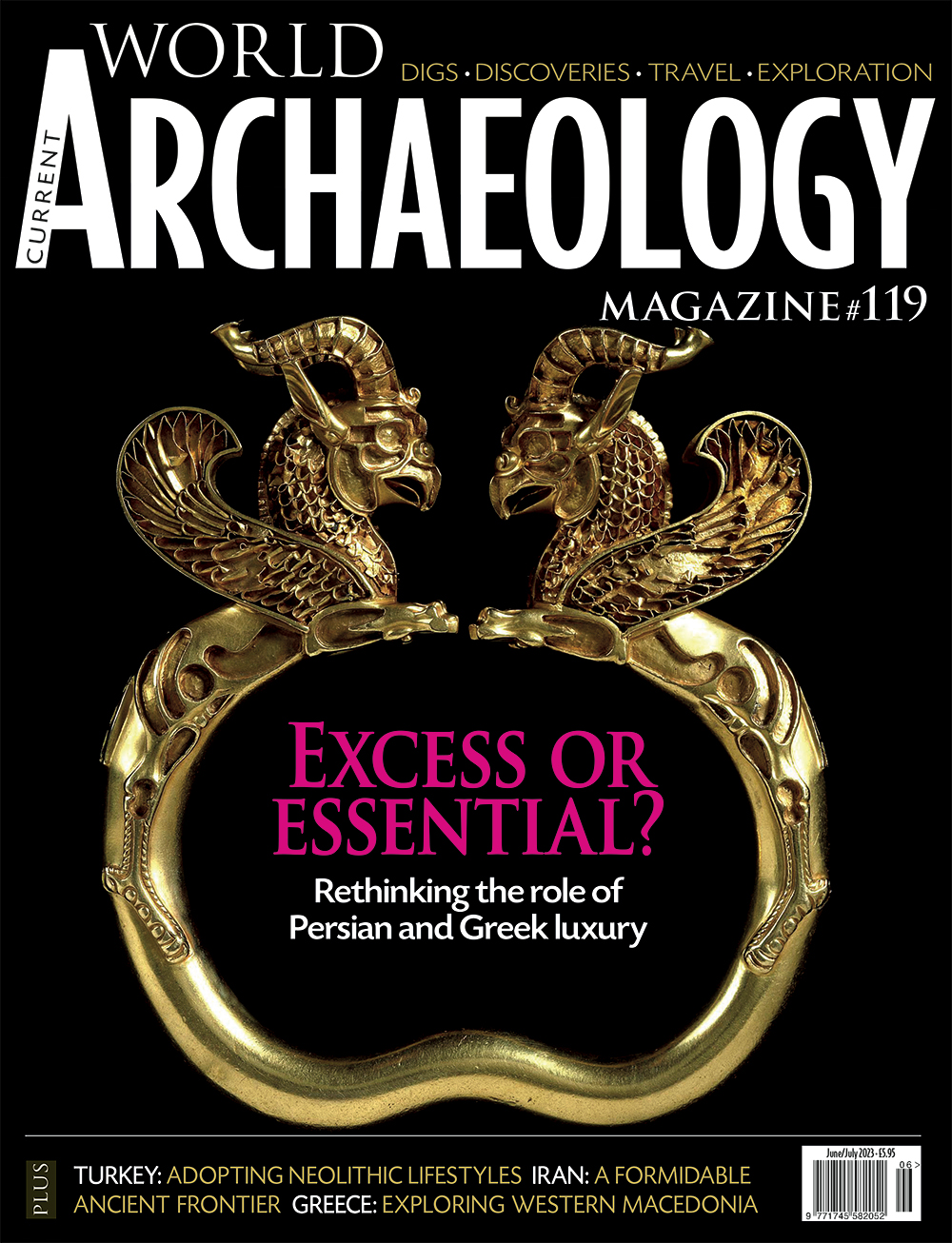It is hard not to see them as excessive. The glorious gold and silver vessels that graced elite banquets in the Achaemenid empire showcase the skill of Persian metalworkers. But while the fine details of animals, mythical scenes, and intricate patterns still thrill viewers, did these sumptuous wares ever have a role beyond expressing extreme wealth? In our cover feature, we see how a British Museum exhibition is revealing that this seemingly gratuitous glitz knitted an empire together, and helped it s arch foes to forge their own identity. When it comes to changing lifestyles, there can be little that beats the new way of being that was brought about by a settled, farming existence: a development we associate with the Neolithic. We can see plainly enough from the archaeology how this shift changed the world forever, but it s impact on individuals has always been harder to grasp. Now the results of a range of scientific analyses are shedding astonishing light on ancient l ives on the Konya Plain, Turkey, at the dawn of the Neolithic.
Change was also writ large on the Gorgan and Tehran Plains of Iran, as they became a focus of the astonishing northern defences of the Sasanian empire. This is a region where, as well as the Gorgan Wall, a formidable barrier that stretched for more than 170km, gigantic fortresses were once constructed. These formidable fortifications have a footprint that reaches roughly 200ha, and once quartered great armies living in tents. But why were such forces necessary, and how did they slot into the wider frontier infrastructure?
In our travel section, Alex Rowson takes in the archaeological highlights of Western Macedonia. Meanwhile, Richard Hodges has been following in the wake of generations of mariners by investigating the extraordinary concentration of inscriptions carved into the rock of Grama Bay, Albania.

